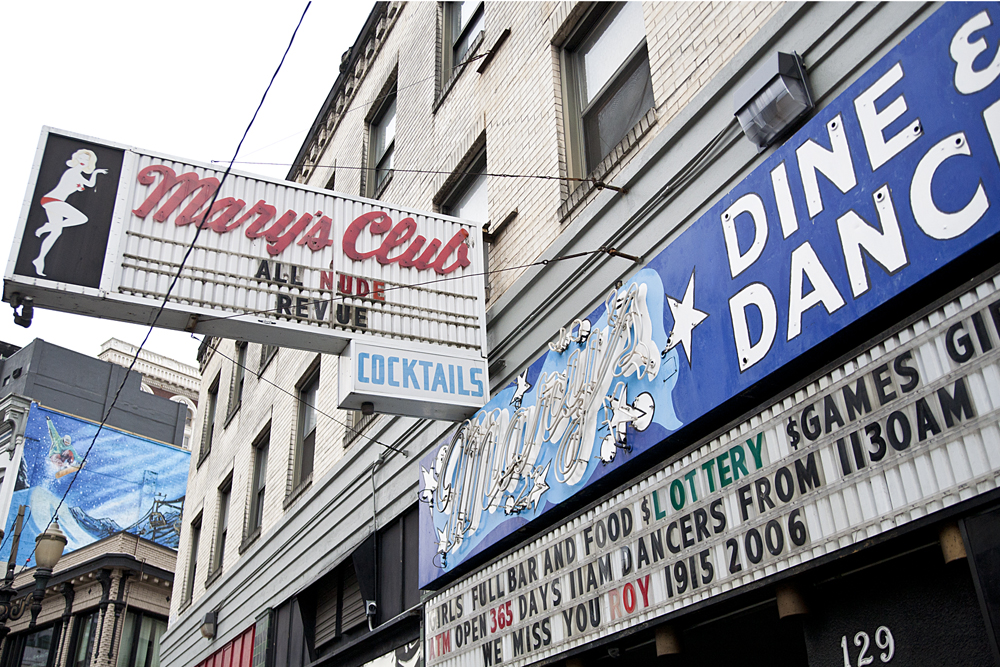Ah, Portland—The City of Roses, microbreweries, the Trail Blazers and, of course, strip clubs. From Mary’s (the oldest strip club in Portland) to Casa Diablo (the first vegan strip club in America), you have an array of strip clubs to choose from.
I come from the third largest state, California, and moved to the city with the most strip clubs per capita. I’d never gone to a strip club before moving to Portland. It just wasn’t a thing my friends and I did, least of all a topic of discussion. Not because I’m a prude or because my friends are, but because it’s just not nearly as accessible there as it is here.
The other day, my friends and I were taking part in a Sunday brunch that consisted of bottomless mimosas. The topic of food is always on the table between the 10 of us, which led us to the discussion of where to get the best steak. You might be wondering, “What do steaks have to do with strip clubs, Molly?” If you just asked that question, then you clearly have never been to Acropolis. Neither had I, until that Sunday night. Acropolis Steakhouse and Strip Club offers a $7, 8-ounce sirloin that is mouthwatering.
At first I was caught off guard by the casual attitude toward strip clubs. But as I walked into the wood-paneled bar and saw the first pair of stripper boobies I’d ever seen, I couldn’t help but feel fascinated more than anything else. It wasn’t at all what I was expecting. The ladies were super friendly, and the men weren’t wearing loose pants.
This got me thinking: Why does Portland have the most strip clubs per capita in the nation? For one, this state has some of the most relaxed laws when it comes to stripping, thanks to a Supreme Court case back in 2005. Live sex shows are legal, as long as no prostitution follows suit. In clubs that serve alcohol, nudity is legal. Dancers may wear whatever they want. They can touch customers as well as be touched, but they can also forbid it. Due to the First Amendment, dancers can do whatever they want on stage and in private dances without the fear of cops rushing in to arrest them on prostitution charges.
But not everything is peachy for the dancers. A very unconventional—yet very Portland—thing happened last year: Strippers were asked by state legislators to help write a new bill that would create industry regulations. In February of this year, a handful of strippers, social workers and sex worker rights advocates went to Salem to push for better working conditions. The new bill would require strip clubs to have posters with a hotline phone number where dancers could anonymously report abuse, complaints, wage problems and sex trafficking, as well as keep up with health code regulations; aka, no glass on the stages. The fact that this isn’t the law by now is mind-boggling to me. But with lots of pushback from strip club owners, it’s no wonder it hasn’t happened yet. With such a large number of strip clubs, Oregon might be the first state to do something like this. The bill is still in the process of being passed.
As much as I love being from California, I wish the Golden State was half as open-minded as Oregon when it comes to strip clubs.






